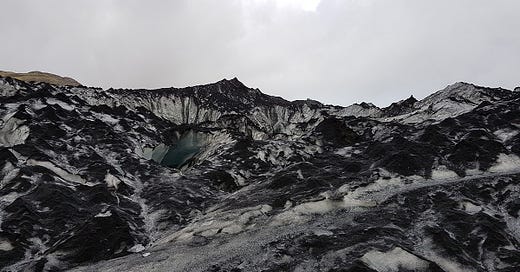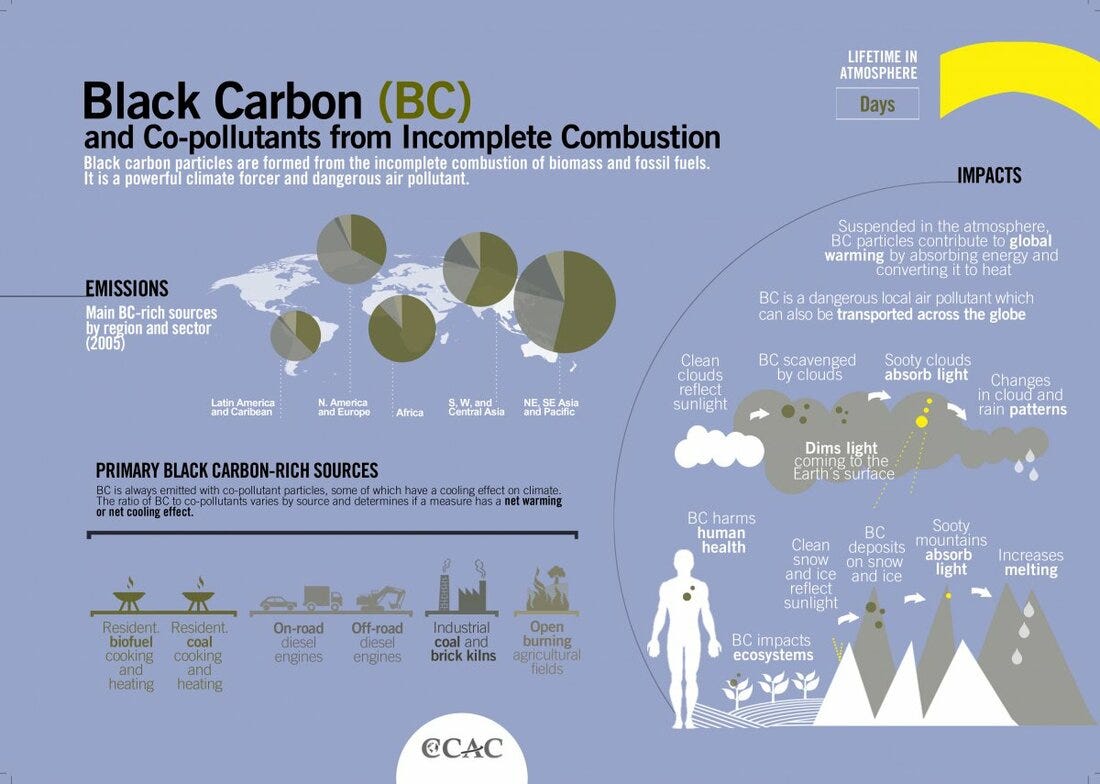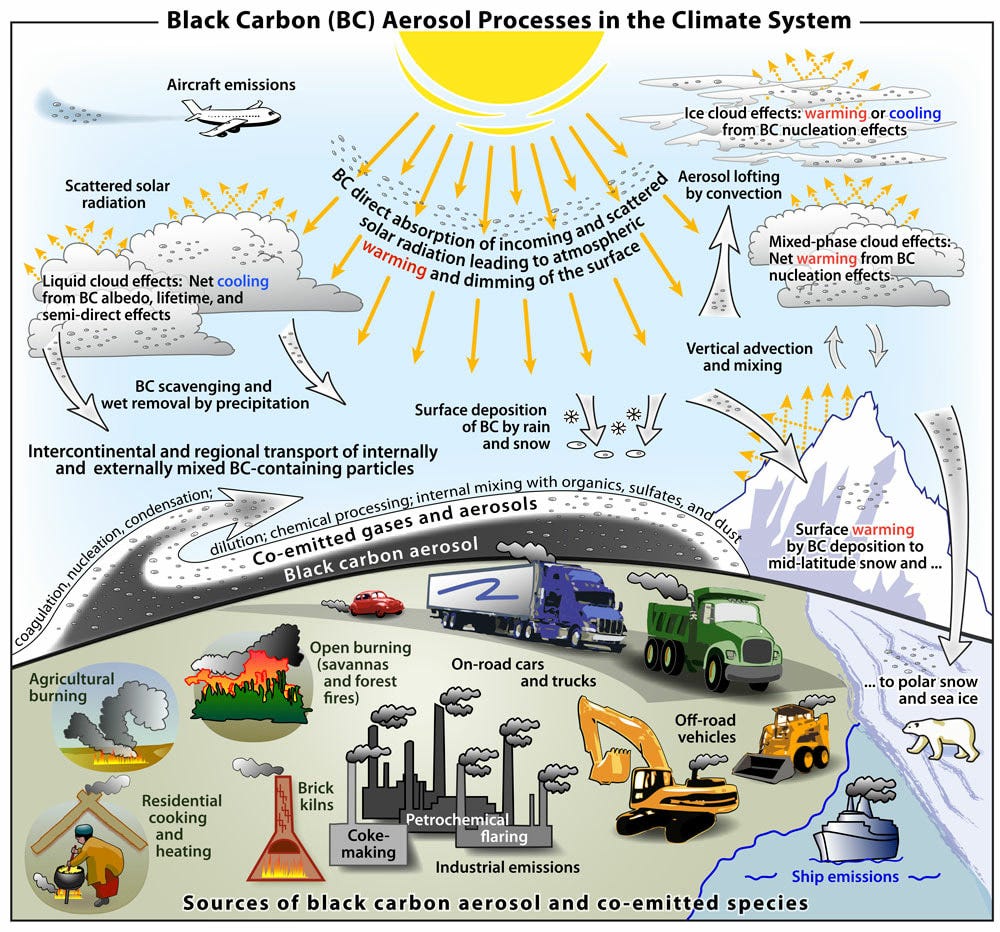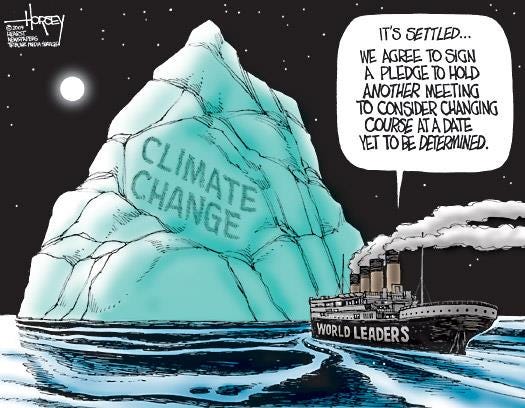Bad Black Carbon in the AIR
Black Carbon is the most strongly light- absorbing component of particulate matter (PM), and is formed by the incomplete combustion of fossil fuels, biofuels, and biomass.
A Carbon2Soil REACH & TEACH center is henceforth referred to as an:
ECOHUB
We are about to start development of ECOHUBS that are geared to remove CO2 from the atmospere which is caused by the build-out of the South African hydrogen infrastructure and rural power generation.
Progress and news will be brought to you by CATCH CO2 (as catch can) as we see fit and as you subscribe
The Carbon2Soil=REGENERATION process covers black carbon. Explantion how to mitigate BC will follow later.
388 page Report on Black Carbon in the air on top of CO2
The sign and magnitude of the net climate forcing from Black Carbon (BC) emissions are not fully known at present, largely due to remaining uncertainties regarding the effects of BC on clouds. Though most estimates indicate that
BC has a net warming and cooling effect.
Regional climate impacts of BC are highly variable, and sensitive regions such as the
Arctic and the Himalayas are particularly vulnerable
to the warming and melting effects of BC. BC also contributes to the formation of
Atmospheric Brown Clouds (ABCs) and resultant changes in the pattern and intensity of precipitation.
There is a general consensus within the scientific community that BC is contributing to climate change at both the global and regional levels. Like CO2, BC is produced through the burning of carbon-based fuels, including fossil fuels, biofuels and biomass.
BC is part of the mix of PM released during the incomplete combustion of these fuels. BC influences climate by absorbing sunlight when suspended in the atmosphere or when deposited on the Earth’s surface. The energy absorbed by BC is then released as heat and contributes to atmospheric warming and the accelerated melting of ice and snow. In addition, BC is capable of altering other atmospheric processes, such as cloud formation and evaporation, and precipitation patterns.
Biomass burning is currently a major source of BC in Greenland and the North Pole (Hegg et al., 2010). Bauer and Menon (2012) point to agricultural emissions from some of the largest BC emissions sources contributes considerably to total radiative forcing. On-road transportation emissions are the largest contributor to radiative forcing in the short term (by 2020), due to a combination of GHG and BC emissions.
Residential biofuel combustion is the second largest contributor in the short term due to the contribution from BC and CH4.
Stohl et al. (2007) concluded that biomass burning has a “significant impact on air quality over vast regions and on radiative properties of the atmosphere” and
in particular “has been underestimated as a source of aerosol and air pollution for the Arctic, relative to emissions from fossil fuel combustion.” Biomass burning is currently a major source of BC in Greenland and the North Pole Bauer and Menon (2012) point to agricultural burning in Europe and Asia as contributing to
positive net forcing in those regions.







